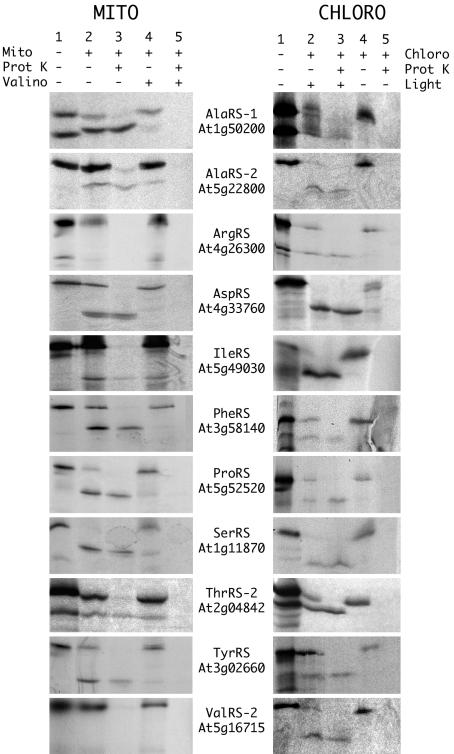Fig. 2.
In vitro import into organelles of targeting sequence-GFP fusions. In vitro transcriptions/translations products (lane 1) were incubated in the presence of mitochondria or of chloroplasts and were partially processed into smaller polypeptides (lane 2), which corresponded to the fusion proteins upon cleavage of the predicted targeting sequences. The addition of proteinase K to the import medium reduced the signals corresponding to the preproteins but did not affect the signals corresponding to the processed proteins that were protected by mitochondrial or chloroplastic membranes (lane 3). The addition of valinomycin, which is known to inhibit mitochondrial protein import, or darkness, which is known to inhibit chloroplastic protein import, prevented the formation of the processed proteins (lanes 4 and 5). In these conditions, all radioactive signals were digested by proteinase K (lanes 5), showing that the signal observed in lane 3 represented genuine imported proteins.

